Learning the Art of Ancient Crafts in Suzhou
In Suzhou, near Shanghai, Sharon McDonnell learns about the incredible work that goes into the unique Chinese crafts of olive-pit carving, fan-making and silk embroidery.
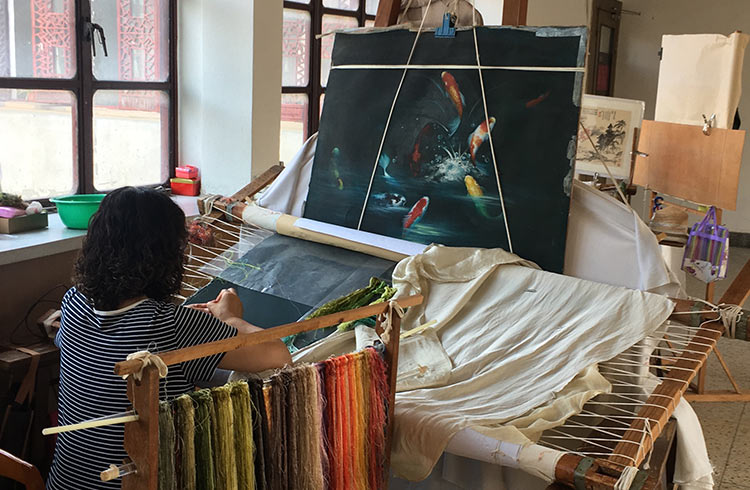 Photo © Sharon McDonnell
Photo © Sharon McDonnell
Suzhou, a 2,500-year-old city, 70mi (112km) west of Shanghai, is famous for traditional crafts, from silk embroidery to wood carving, jade, and unexpectedly olive-pit carving, a local practice that has been going on here for centuries (along with the carving of walnut shells, lotus seeds, and fruit pits).
Olive-pit Carving
This intricate craft uses the olive pit (or stone) as a tiny canvas for highly intricate and detailed carvings to create a miniature 3-D works of art. The best-known olive-pit carving was created in 1737 and depicts a boat with eight people, furnishings and 300 characters from a Chinese poem. That masterpiece can be seen in Taiwan’s National Palace Museum. As I’m in Suzhou, I want to see this tiny precision craft for myself, having thoughtlessly tossed out pits for years.
I head to Zhoushan, a village of olive-pit carvers near Taihu Lake in Suzhou’s western suburbs. Here, 10,000 people make a living from this craft, including 3,000 artisans in more than 100 workshops (the rest are in sales and packaging).
I watch in disbelief as an artisan, working with a tiny chisel and magnifying glass, meticulously cuts, whittles and sculpts designs into a pit, like it’s jade or wood; I feel like I’m observing eye surgery.
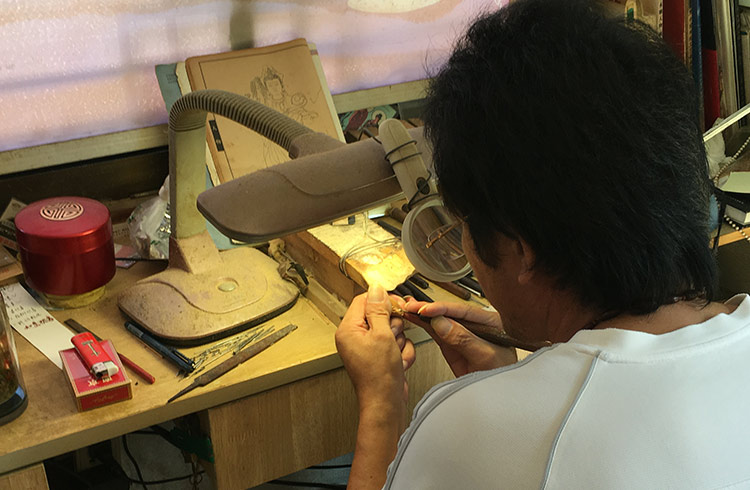
I ponder the finished pits, which show faces, deities and flowers, and recall an award-winning masterwork, with a dragon and clouds on one side, and Buddha on the other, which sold for US $16,000 in 2014. A saleswoman tells me the artisans use gan lan olives from southern China.
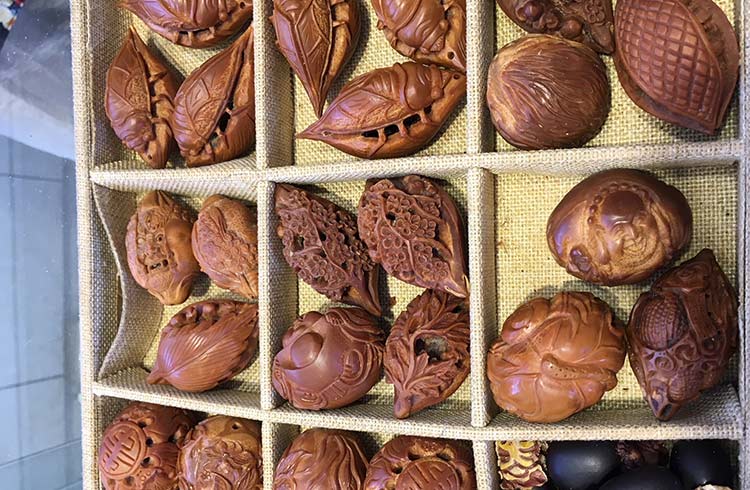
Silk Embroidery
Renowned for exquisite craftsmanship, vivid glowing colors and delicate designs, silk embroidery is one of China’s four major embroidery styles. I see this artwork for the first time in an exhibit at the Humble Administrator’s Garden, one of Suzhou’s UNESCO-designated gardens. Here, I see “paintings” of flowers and landscapes, that upon closer inspection turn out to be embroidery. The next time, it’s in the gallery of Yao Jianping, a woman embroidery master, where I see the astonishingly realistic portraits of animals, humans, landscapes and birds.
At the Suzhou Embroidery Research Institute, I watch the women at work, often copying a photograph. One silk thread can be split into 48 strands, barely visible to the naked eye, and 1,000 different types of threads and more than 40 types of stitches are used.
The craft’s highest form, double-sided embroidery, displays a different design on each side. Suzhou was a silk capital of China for centuries, and its high-quality silk was used for royal clothing and bedding. At Suzhou Silk Museum, I get to see masterpieces depicting dragons, flowers and clouds on royal robes, and read about the history of the Silk Road and how silk is made. At Suzhou No. 1 Silk Factory, there’s a film about the short, but intensely productive life, of the silkworm, whose cocoons are boiled, their silk filaments unspooled by machines, and then woven on looms.

Fan-making
Sandalwood folding fans, ornately carved from the fragrant wood and decorated with paintings and calligraphy, are another ancient Suzhou craft, produced in more than 16,000 different styles. At the Fan Museum, China’s biggest fan is on display, it’s 32 inches wide (82cm), which depicts a variety of Buddhist scenes on both sides.
At the Sheng Feng factory, patterns are drawn, burned into the wood with an electric iron, and then the pre-punched holes are sawn into shapes depicting landscapes, gardens and people. Before, fans were familiar to me only in cheap paper versions. I now see a traditional carved wood fan is a thing of beauty.
Trip Notes
How to Get to Suzhou From Shanghai
The bullet train takes 30 minutes.
How to Find the Real Thing
Although you will see these products in many gift shops, buying them from the workshops or factories that make them will guarantee the best quality.
Here are the five key ways to identify fine embroidery: the size of the silk threads, length of the stitches, density of the embroidery, colors of silk, and identifying hand or machine embroidery.
Read in-depth tips on spotting top-quality silk embroidery here.
Related articles
Simple and flexible travel insurance
You can buy at home or while traveling, and claim online from anywhere in the world. With 150+ adventure activities covered and 24/7 emergency assistance.
Get a quote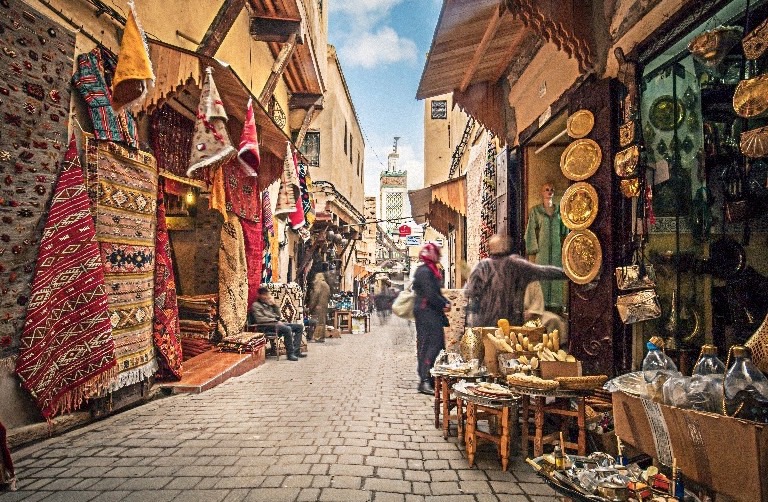
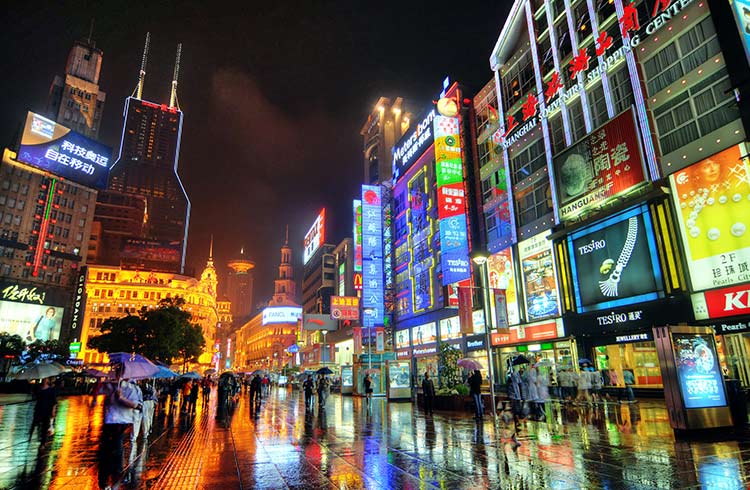
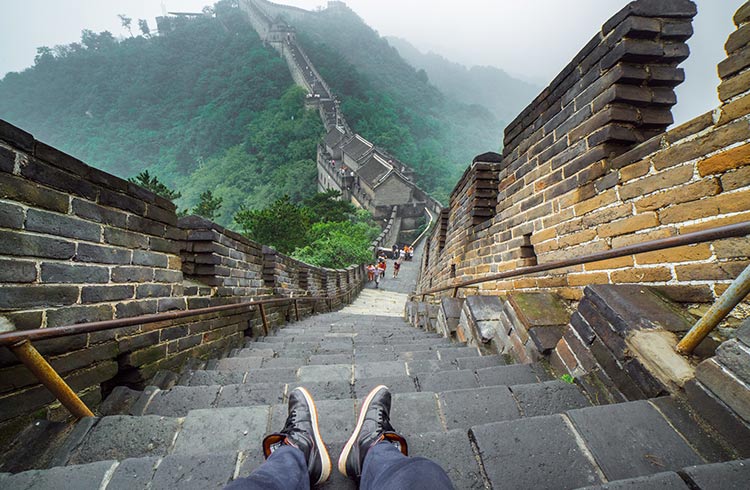
No Comments